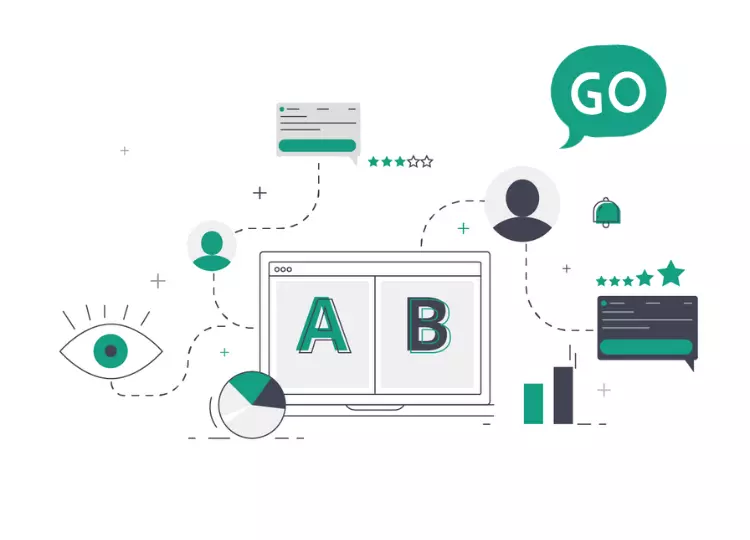4 rules around lead nurturing that you need to know!
 Katarzyna Kwartnik
Katarzyna Kwartnik
Marketers never stop looking for new ways of generating leads. Valuable business contacts are difficult to get, so finding new methods of reaching them out is basically a part of every marketing and sales department’s daily duties. However, whilst everyone is trying to chase new touchpoints with potential clients, not many seem to care about strengthening existing relations. Making new contacts is always warmly welcomed as long as it doesn’t leave current ones feeling neglected. Forgetting about deals you have already made is one of the major e-commerce mistakes in the year 2019.
Marketers and salespeople may ask themselves the question “what is lead nurturing?” For many, it is just a buzzword, but others see a lot of value in lead nurturing. The latter group is more likely to face fewer problems with sealing deals and designing customer journeys.
Looking at this only from a theoretical point of view, one lead nurturing definition is a set of tactics that result in landing a client. In practice, lead nurturing is more complicated than that. It includes not only gathering some contact details, catching potential customers in the sales funnel and encouraging them to convert, but also preparing, analysing and optimising performance to deliver the best results.
What to take into consideration when planning a lead nurturing strategy? Let us guide you through four golden rules to follow.
Lead segmentation
Before you start lead nurturing activities, it is worth identifying groups of potential leads to adjusting communication accordingly.
New leads, who never previously had touchpoints with a brand, should receive a different set of messages and enter the sales funnel in a different way than so-called warm leads. While new leads can become familiar with the brand through articles, e-books or webinars, “warm leads” can interact with the brand repeatedly through dedicated demos or exclusive, personalized invitations.
Lead nurturing also concerns those clients who have already converted before. To impact their next conversion, you need to serve them something extraordinary: for example, a special offer or an upgrade to their previous purchase. It could be also some gated content that is unavailable to others. Care about those leads!
Lead nurturing is not spam
If anyone answers the question “what is lead marketing?” with the simple reply: “mass-sending as many messages as often as possible”, then they clearly don’t understand the whole process. Lead nurturing is not about spamming with marketing communication - it is about delivering the right messages at the right time and in the right context. This is the only way to make your lead nurturing activities effective.
Lead nurturing stages
Managing and maintaining customer relations and making them work in your sales funnel requires adjusting processes at every step.
The first stage, based mainly on building brand awareness, is also often the very first touchpoint between a client and a brand. Here you need to take great care of providing value and knowledge for a lead to delve into. Getting them interested in the area and showing them solutions (how-to tutorials or case studies, for example) can be a significant step towards pushing them further into the sales funnel. It is also recommended to deliver a lot of statistics, trends and inspiration that can encourage clients to take the next step: interacting with the brand and being amazed by their first impressions.
The next step of your lead nurturing strategy should be prepared in a more sales-orientated manner, with some extra encouragement to make a conversion. An invitation to a webinar or even to a sales demo can result in making a special bond with the brand that results in the desired action. At this stage, a subtle, appropriate reminder about an offer matters most. Many brands reach a “bottleneck” at this point if they don’t put enough focus on taking care of leads, so we list a few ways to do so below:
send reminders in a form of well-segmented, targeted mailing;
paid campaigns on social media, especially those making the most of re-marketing;
using web push notifications for reminding potential clients about an offer or brand new content.

Create your own web push automatic scenarios for B2B lead generation. Start now - always free up to 500 subscribers!
In the last, deciding stage, potential clients should be served with premium content (for example testimonials) and the brand should arrange a meeting or a call to seal the deal.
The golden mean between personalization and automation
Lead nurturing automation allows you to act faster, however, the strategy should consist of maximized personalization. Scaling your processes can take a long time without automating, analyzing and optimizing your performance. However, without personalization, a brand faces the possibility of putting users off with spammy, off-target messages.
The lead nurturing process will vary for each and every brand and there are always a lot of different factors to take into consideration. Different brands have various target groups and work within different industries. However, they should have one thing in common: understanding the importance of the customer journey. A brand should keep up with clients or be a few steps ahead, instead of chasing them all the time.

Content Marketing Manager @ PushPushGo
Words enthusiast both in literature and marketing. At PushPushGo responsible for developing content strategy and writing everything that needs to be written.
Try PushPushGo to engage and connect with your audience.
Create an account and start testing!





